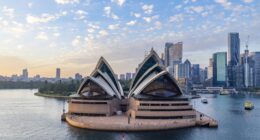Share this @internewscast.com
Inflation has been stable for the past three months, though a slight increase in the core figure might create uncertainty about when Australians can expect an interest rate reduction.
Newly released monthly statistics from the Australian Bureau of Statistics show that headline inflation stood at 2.4 percent for the year ending in April. Meanwhile, the trimmed mean, which is the Reserve Bank’s favored measure of core inflation, ticked up from 2.7 to 2.8 percent.
Even though both metrics are within the RBA’s target range, the latest data highlights why many Australians continue to feel the effects of the cost-of-living crisis.
/https%3A%2F%2Fprod.static9.net.au%2Ffs%2F44acb210-1c66-45bd-9a5a-cebf0235b700)
Fruit and vegetable prices rose 6.1 per cent over the last year, while the cost of eggs skyrocketed a whopping 18.6 per cent on the back of shortages caused by bird flu outbreaks.
Rents have continued to rise as well, albeit by the smallest amount since February 2023, up 5 per cent.
On the other side of the equation, fuel prices fell 12 per cent over the last year, and government subsidies helped electricity prices drop 6.5 per cent.
“Without all the Commonwealth and state government rebates, electricity prices would have risen 1.5 per cent,” ABS head of prices statistics Michelle Marquardt said.
The higher-than-expected inflation figures may cast some doubt over whether the Reserve Bank will follow up last week’s interest rate cut with another one at its next meeting in early July.
“The RBA remains cautious about inflation, and today’s reading shows why,” eToro market analyst Josh Gilbert said.
“But let’s be clear, this isn’t a reason to panic; inflation doesn’t just move in a straight line, one way or the other.
“This does mean that the RBA will be on watch and that a rate cut in July is certainly not nailed on…
“But inflation remains within the Reserve Bank’s target band of 2-3 per cent, and the upside risks are clearly receding, which is why the market is pricing three further rate cuts this year.”
However, some economists said there was reason to believe the RBA would be more likely to cut the cash rate to 2.6 per cent following today’s data, after the volume of construction work done came in well under expectations.
“The key surprise was in the first partial data release for first-quarter GDP – the construction work done, which was reported to have stalled against a consensus for a 0.5 per cent rise,” State Street’s Krishna Bhimavarapu said.
“We increasingly feel that the RBA might cut faster or quicker if Q1 GDP data disappoints next week.”













